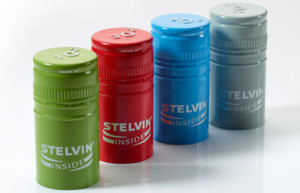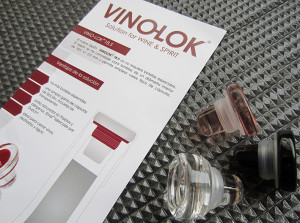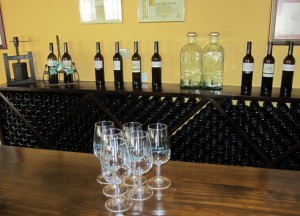
The other day we were approached by Systembolaget (the Swedish Monopoly) as they launched a tender for the purchase of albariño. The tender document is always quite comprehensive and gives details not only of how much they are willing to spend, but sometimes also, the style of wine that they are looking for. (From my own point of view the product style would simply read “typical”, in other words a true representation of what it is supposed to be).
The other part of the tender document includes all the technical stuff, such as the case size etc., and I have noticed that on the last couple of tenders they have started to specify that the closure should be screw cap. Now, to the best of my knowledge there are only a handful of bodegas (out of nearly 200 in our denomination) that are currently able to supply albariño under screwcap, and Bodegas Castro Martin is not one of them. No doubt this will restrict the number of bodegas that are able respond to the tender, and as such appears to be an odd way to filter their choice of suppliers. After all, a producers choice of closure has nothing to do with the quality of wine that they are able to produce!
For our business the single most important reason for not choosing screw cap is quite simply that we already have a closure that we know works very well with our wine. We have been using Nomacorc, the synthetic closure for almost 10 years now, and to date I cannot recall any serious problem or complaint (touching wood as I say this). Our decision to use Nomacorc was not made by accident, but only after very extensive testing over an initial period of twelve months. However, we did not stop there, and have since taken our testing to the next level, measuring results over a two year period. This is not done simply by tasting sample wines, but also by examining the Oxygen Transmission Rate (OTR) of the bottles. The fact is that Nomacorc behaves very much like a natural cork in that it allows minuscule amounts of oxygen to penetrate the cork over a period of time. The significance is that if a closure is 100% hermetic (as in the case of screw cap), and allows no transfer at all, then this can be detrimental to a finished wine.
The problem with screw cap is usually caused by sulphur. Nearly every wine that we buy these days is treated with suphur dioxide before bottling (which acts as a preservative), and hence the back label proclaiming ‘Contains Sulphites’. In low oxygen conditions, where oxygen cannot enter, the sulphur is trapped and can develop volatile compounds called mercaptans, which impart unwanted flavours and aromas. As screw cap closures eliminate almost all oxygen, then in a way they can be considered as too efficient.
Certainly the modified evolution of wines under screw cap has now caused some new world producers to reconsider their position, and one or two major players in South Africa and Australia are now reverting back to cork.
Meanwhile, back at the Systembolaget in Sweden, through my contacts I actually managed to relay a message to the buyer asking if screw cap was absolutely necessary – the reply came back that in his opinion all young, aromatic wines should be bottled with this closure. The problem is that I don’t necessarily agree with this view, and not only that, why would I want to move away from something that I already know works perfectly well for our wine?

The other day we were approached by Systembolaget (the Swedish Monopoly) as they launched a tender for the purchase of albariño. The tender document is always quite comprehensive and gives details not only of how much they are willing to spend, but sometimes also, the style of wine that they are looking for. (From my own point of view the product style would simply read “typical”, in other words a true representation of what it is supposed to be).
The other part of the tender document includes all the technical stuff, such as the case size etc., and I have noticed that on the last couple of tenders they have started to specify that the closure should be screw cap. Now, to the best of my knowledge there are only a handful of bodegas (out of nearly 200 in our denomination) that are currently able to supply albariño under screwcap, and Bodegas Castro Martin is not one of them. No doubt this will restrict the number of bodegas that are able respond to the tender, and as such appears to be an odd way to filter their choice of suppliers. After all, a producers choice of closure has nothing to do with the quality of wine that they are able to produce!
For our business the single most important reason for not choosing screw cap is quite simply that we already have a closure that we know works very well with our wine. We have been using Nomacorc, the synthetic closure for almost 10 years now, and to date I cannot recall any serious problem or complaint (touching wood as I say this). Our decision to use Nomacorc was not made by accident, but only after very extensive testing over an initial period of twelve months. However, we did not stop there, and have since taken our testing to the next level, measuring results over a two year period. This is not done simply by tasting sample wines, but also by examining the Oxygen Transmission Rate (OTR) of the bottles. The fact is that Nomacorc behaves very much like a natural cork in that it allows minuscule amounts of oxygen to penetrate the cork over a period of time. The significance is that if a closure is 100% hermetic (as in the case of screw cap), and allows no transfer at all, then this can be detrimental to a finished wine.
The problem with screw cap is usually caused by sulphur. Nearly every wine that we buy these days is treated with suphur dioxide before bottling (which acts as a preservative), and hence the back label proclaiming ‘Contains Sulphites’. In low oxygen conditions, where oxygen cannot enter, the sulphur is trapped and can develop volatile compounds called mercaptans, which impart unwanted flavours and aromas. As screw cap closures eliminate almost all oxygen, then in a way they can be considered as too efficient.
Certainly the modified evolution of wines under screw cap has now caused some new world producers to reconsider their position, and one or two major players in South Africa and Australia are now reverting back to cork.
Meanwhile, back at the Systembolaget in Sweden, through my contacts I actually managed to relay a message to the buyer asking if screw cap was absolutely necessary – the reply came back that in his opinion all young, aromatic wines should be bottled with this closure. The problem is that I don’t necessarily agree with this view, and not only that, why would I want to move away from something that I already know works perfectly well for our wine?














